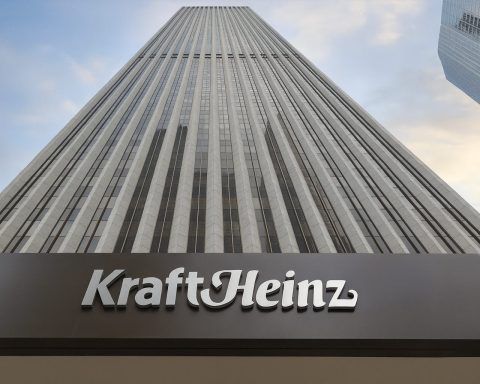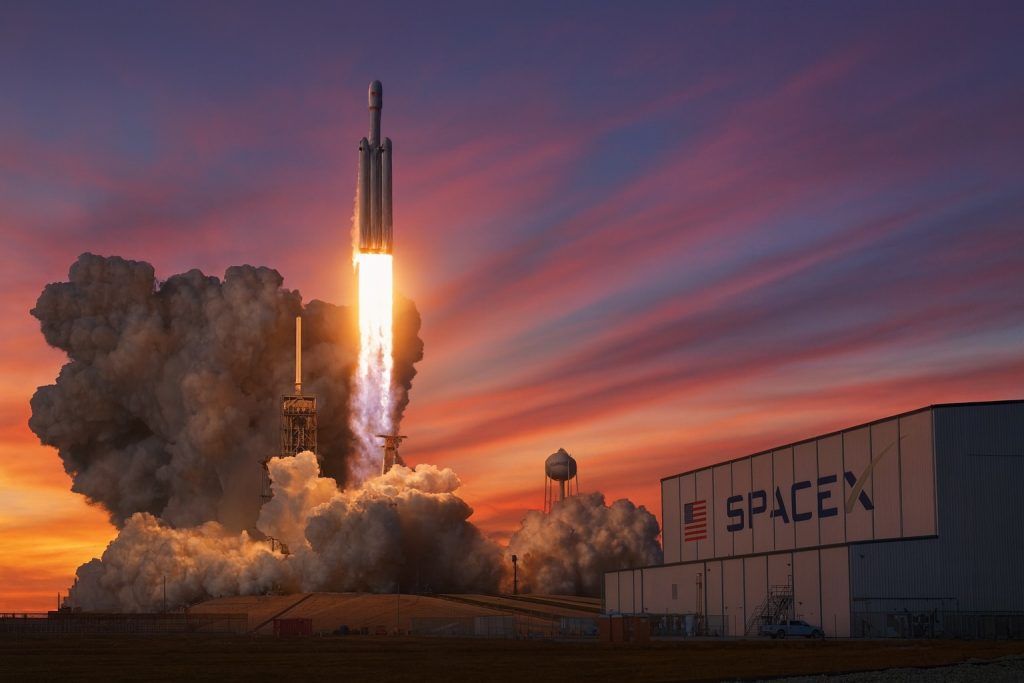- Key Facts: OPEC+ agreed on Oct. 5, 2025 to raise crude output by 137,000 barrels per day in November [1] [2]. This is the same modest increase as in October, part of a gradual rollback of last year’s deep cuts [3] [4]. The group cited a “steady global economic outlook and current healthy market fundamentals” for the move [5]. Major producers Saudi Arabia and Russia initially clashed over the size of the hike – Russia pushed for a small increase, while Saudi Arabia favored a much larger one [6] [7]. Oil prices briefly fell on the announcement (Brent crude around mid-$60s) amid concerns of an emerging supply glut, though analysts note actual supply may not rise as fast as quotas suggest [8] [9]. Experts say OPEC+ is “walking a tightrope” between regaining market share and avoiding market oversupply [10] [11].
Modest November Hike Approved
In a virtual meeting on Oct. 5, the OPEC+ alliance (the Organization of the Petroleum Exporting Countries plus Russia and other allies) confirmed that a select group of eight producers – Saudi Arabia, Russia, Iraq, the UAE, Kuwait, Kazakhstan, Algeria and Oman – will raise production by 137,000 bpd in November 2025 [12] [13]. This boost matches the increase applied in October and is relatively small by historical standards. OPEC+ described the move as a response to “a steady global economic outlook and current healthy market fundamentals,” noting that output adjustments may be paused or reversed if conditions change [14].
The incremental hike continues a recent shift in OPEC+ strategy. After deep voluntary cuts in 2023 and early 2024 (peaking at about 5.85 million bpd), the group began gradually unwinding those curbs this year. By the end of September, OPEC+ had already removed a 2.2 million bpd cut layer a full year ahead of schedule, and was in the process of rolling back an additional 1.65 million bpd cut [15] [16]. The October and November increases of 137,000 bpd each simply extend that process, effectively eliminating the earlier voluntary cuts by year-end.
Saudi vs. Russia – Finding a Compromise
Behind the scenes, the two leading producers – Saudi Arabia and Russia – held sharply different views on how big the November hike should be. Sources told Reuters that Russia favored sticking with the same 137,000 bpd increase as in October, citing concerns about over-supplying the market and noting that sanctions have constrained its own output capacity [17]. By contrast, Saudi Arabia — which has ample spare capacity — initially pushed for a much larger rise (proposing 274,000, 411,000 or even 548,000 bpd) to reclaim market share more aggressively [18]. Ultimately, the two sided overcame their disagreement and settled on the modest 137,000 bpd figure, as later confirmed by OPEC’s statement [19] [20].
In its public announcement, OPEC noted that group fundamentals remain healthy partly due to low inventory levels [21]. But the internal tug-of-war between a cautious Russian stance and a market-share push from Riyadh underscores the balancing act. Bloomberg observed that leaders “Saudi Arabia and Russia overcame a difference in position” to reach agreement, reflecting their roles as the dominant OPEC and non-OPEC members, respectively [22]. Riyadh’s strategy of gradually adding supply is widely seen as an attempt to slow the gains of U.S. shale and other challengers, even if it risks further softening prices.
Market Reaction – Prices and Outlook
Oil markets reacted nervously to the decision. On the day of the announcement, Brent crude traded in the mid-$60s per barrel. While that is above the mid-$60s range seen in mid-2025, it is still well below this year’s peak near $82 [23]. Traders had already positioned for a larger OPEC+ increase, so the final 137,000 bpd figure briefly sent prices down. On Friday (Oct. 4), Brent had dipped below $65 as analysts warned of an upcoming supply glut [24]. By the weekend the prospect of added supply left Brent around $64-$65, down from recent highs, and analysts noted oil futures were on track for further weekly declines [25] [26].
Some market participants actually expected a modest price rebound from Monday’s news. Scott Shelton of broker TP ICAP said that because the increase was smaller than the market feared, “oil prices may rise … by up to $1 per barrel” as traders digest the cautious outcome [27]. Likewise, Jorge León of energy consultancy Rystad Energy commented that OPEC+ “stepped carefully after witnessing how nervous the market had become,” and warned the cartel is “walking a tightrope between maintaining stability and clawing back market share in a surplus environment.” [28]. In short, analysts say the small hike keeps a floor under prices but does little to allay concerns of an eventual oversupply.
Concerns stem from broader demand-supply trends. International agencies have been trimming demand forecasts while noting a surge in output. The IEA recently reported that supply growth (2.7 million bpd in 2025) is outpacing demand growth (raised to 740,000 bpd), suggesting an impending stock build [29] [30]. The EIA agrees, forecasting inventory builds above 2 million bpd from Q3 2025 into early 2026 as OPEC+ boosts production [31]. In its September outlook, EIA predicted Brent would slide toward $50 by early 2026 under those conditions [32]. Similarly, OPEC’s own reports expect robust demand growth (around 1.3 million bpd in 2025 [33]), but even they acknowledge that “oil balances” could become bloated if all announced supply hits the market [34].
Some factors may temper the oversupply fears. Notably, analysts point out that actual output gains have lagged the quotas. Reuters columnist Clyde Russell notes that since April, OPEC+ members have only delivered roughly three-quarters of the extra output they were allowed to produce [35]. That means roughly 500,000 bpd of expected new oil has not materialized in markets. In effect, “the lifting of OPEC+ production quotas has turned out to be bullish for prices, rather than bearish,” he observed [36]. In addition, China’s stockpiling of oil is soaking up some of the surplus: roughly 500,000 bpd is being quietly added to Chinese reserves, helping keep prices stable in a $65–$70 range [37]. These factors suggest that the feared glut may take longer to emerge.
Strategic Motives: Market Share vs. Price
Experts say OPEC+ is deliberately balancing two goals. On one hand, the group is easing cuts to maintain market share as U.S. shale production recovers. On the other, it must avoid a collapse in prices. Saudi Arabia has signaled repeatedly that it prefers to let a bit more oil hit the market to suppress prices enough that some high-cost output (like U.S. shale) becomes uncompetitive [38]. Reuters notes the policy shift “after years of cuts is designed to regain market share from rivals such as U.S. shale producers.” [39]. This could explain why Riyadh was willing to push for a larger boost.
However, global demand growth is moderating. The world economy remains healthy but is slowing in key regions. China’s growth, for example, is weaker than past decades, and Europe’s industry is cautious amid high inflation. The U.S. also has only lukewarm demand increases. Against this backdrop, even small OPEC+ supply additions can quickly build inventories. The IEA and others warn that if all OPEC+ output plans go ahead alongside production elsewhere (U.S., Brazil, Guyana rising), “global inventories will rise by an ‘untenable’ 2.5 million bpd on average in H2 2025,” potentially creating a surplus of over 3 million bpd by 2026 [40].
Complicating the picture is geopolitics. Sanctions on Russia and Iran pose upside risks to supply (if sanctions tighten, Russian barrels may fall off) [41]. Meanwhile, Middle East tensions (e.g. Iran-Israel conflict) can cause short-term price spikes. President Trump in Washington has also publicly pressured OPEC+ to lower prices; Reuters notes his administration “seeking lower oil prices” was a factor in OPEC+ reversing course on cuts [42]. With all these forces, OPEC+ acknowledged it may pause or reverse course if market conditions change [43].
Outlook and Next Steps
Looking ahead, the eight OPEC+ producers are due to reconvene on Nov. 2 [44] [45]. If the market stays weak, they might refrain from further hikes (or even discuss cuts again). But if demand surprises on the upside or non-OPEC supply disappoints, they could resume the gradual unwinding.
Oil market watchers will be listening closely to supply and inventory data in the coming weeks. So far, the modest November boost is unlikely to flood the market overnight. But it does signal that OPEC’s leaders are still prioritizing market share, within a narrow tolerance for price risk. As Rystad’s Jorge León put it, the cartel “is walking a tightrope” in a market where even cautious moves draw big attention [46].
Sources: Official statements and press reports from OPEC, Reuters and Bloomberg news coverage, AP dispatches [47] [48], and analysis from the International Energy Agency and U.S. EIA [49] [50]. Expert commentary is drawn from Reuters and industry analysts [51] [52].
References
1. www.reuters.com, 2. www.wokv.com, 3. www.reuters.com, 4. www.wokv.com, 5. www.wokv.com, 6. www.reuters.com, 7. www.bloomberg.com, 8. www.reuters.com, 9. www.reuters.com, 10. www.reuters.com, 11. www.reuters.com, 12. www.wokv.com, 13. www.wokv.com, 14. www.wokv.com, 15. www.reuters.com, 16. www.reuters.com, 17. www.reuters.com, 18. www.reuters.com, 19. www.bloomberg.com, 20. www.reuters.com, 21. www.reuters.com, 22. www.bloomberg.com, 23. www.reuters.com, 24. www.reuters.com, 25. www.reuters.com, 26. www.reuters.com, 27. www.reuters.com, 28. www.reuters.com, 29. www.reuters.com, 30. www.reuters.com, 31. www.eia.gov, 32. www.eia.gov, 33. www.reuters.com, 34. www.reuters.com, 35. www.reuters.com, 36. www.reuters.com, 37. www.reuters.com, 38. www.reuters.com, 39. www.reuters.com, 40. www.reuters.com, 41. www.reuters.com, 42. www.reuters.com, 43. www.wokv.com, 44. www.reuters.com, 45. www.wokv.com, 46. www.reuters.com, 47. www.reuters.com, 48. www.wokv.com, 49. www.reuters.com, 50. www.eia.gov, 51. www.reuters.com, 52. www.reuters.com










